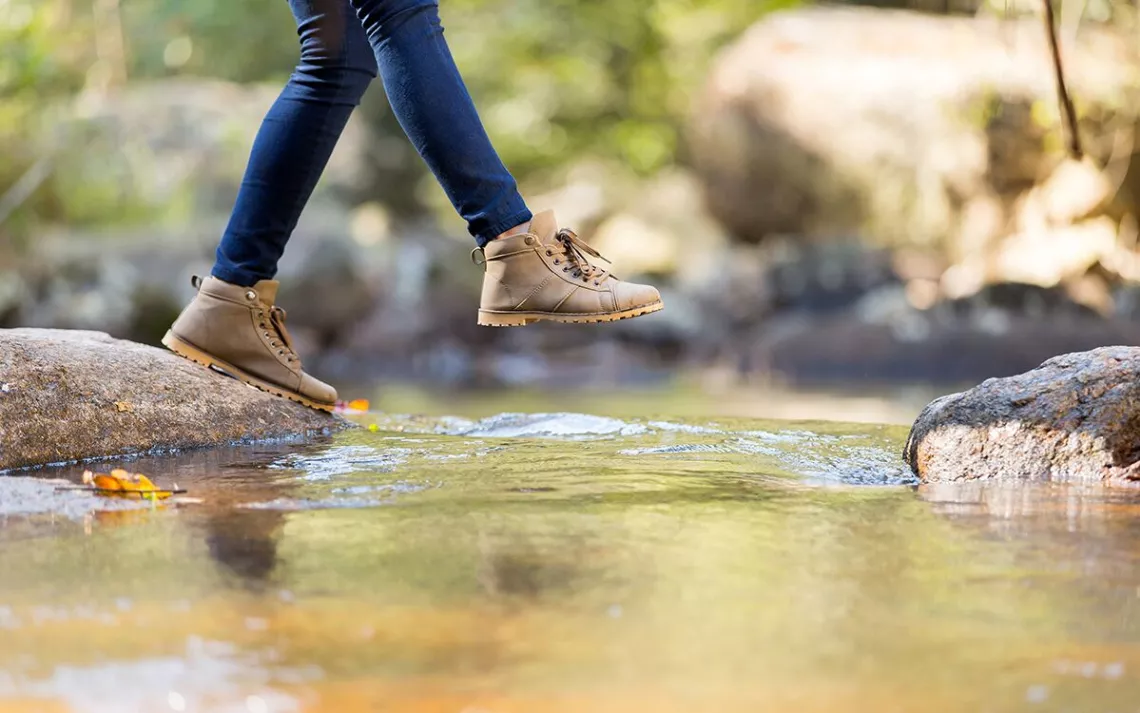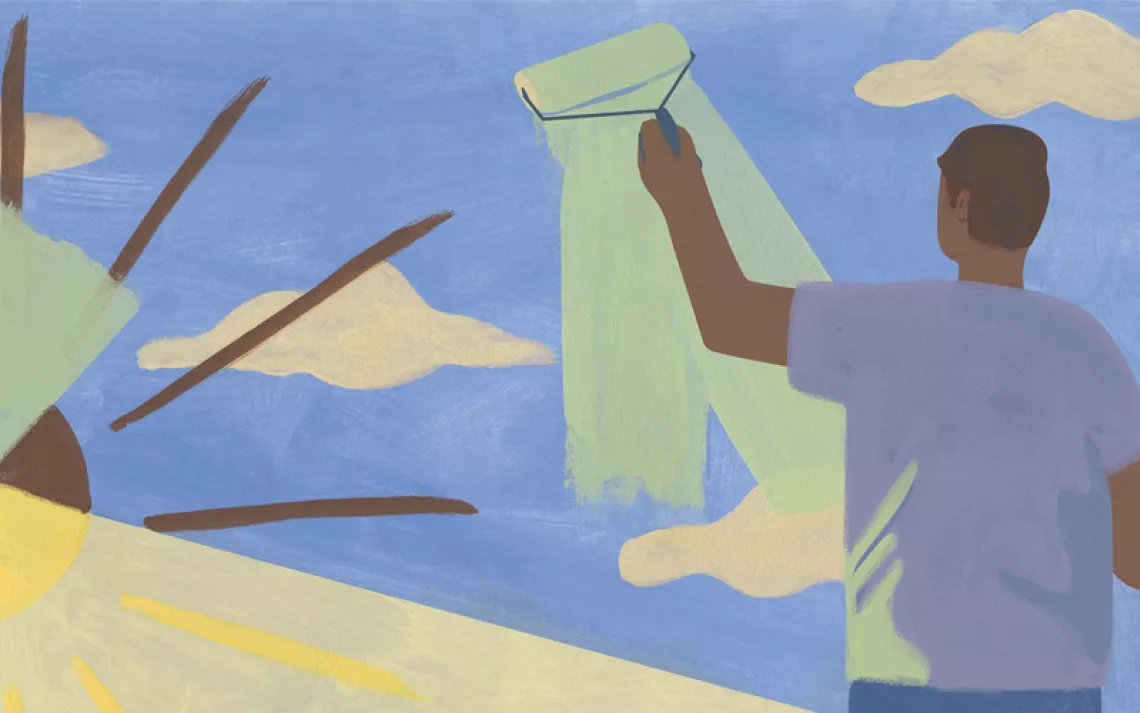New Book Claims Walking Makes Us More "Cognitively Mobile"
A review of Shane O’Mara’s “In Praise of Walking”

Photo by michaeljung/iStock
Until something goes wrong with our feet, legs, or brains, we don't give much conscious thought to the act of walking. After we've mastered the activity as a toddler, we tend not to dwell on how we put one foot in front of the other, until we have trouble doing so. Walking, for many, is just how we get from one place to another when we're not driving.
Shane O'Mara, professor of experimental brain research at Trinity College Dublin and author of Why Torture Doesn't Work: The Neuroscience of Interrogation and A Brain for Business—A Brain for Life wants to change that point of view. He sees walking as vitally important—to individuals, to society, to the human species as a whole. His new book, In Praise of Walking: A New Scientific Exploration, out today from W.W. Norton, is a polemic, but one that's honest in its scope, timely in its urgency, and convincing in its presentation.

O'Mara writes in the introduction, “I want to show in this book how imperative it is that we start walking again. Our brains and our bodies will be the better for it; our moods, clarity of thought, our creativity, our connectedness to our social, urban, and natural worlds will all be the better for it.”
Before addressing present-day prescriptions, O'Mara looks back to our earliest bipedal ancestors—from Walking Eve, who left the first fossilized human footprints, to Otzi the prehistoric iceman, who traversed portions of the Via Alpina five thousand years ago.
By interpreting clues about their height, weight, and gait, scientists are able to contemplate how these prehistoric people moved through the physical world. For instance, walking allows for the easy use of hands and arms, crucial for foraging and child-carrying. Walking makes our minds mobile in a fashion denied other animals. If humanity were not able to walk, it could not have left its birthplace in Africa and spread to the far reaches of the globe.

Having delineated walking's origins, O'Mara (right) turns to its mechanics, the interplay between bone, muscle, and brain. He describes the “GPS” we seem to carry in our heads, allowing us to plan routes to our destinations. He recounts experiments in which subjects in a dark room are able to navigate to the exit, thanks to the brain's ability to orient itself.
In his own research, O'Mara has “focused on understanding the cells that signal where you are heading while moving, the position of boundaries in maze environments, and the presence of immovable objects in the environment.”
We know that walking benefits the heart and the lungs, but it also improves neural activity and blood flow to the brain. It even aids the act of imagination. Walking at a clip just fast enough not to require continuous concentration has been shown to exert the best possible effect on creative cognition, according to O'Mara.
“Aerobic exercise supports the widespread production of key molecules that act to keep the brain in good working condition.” Brain-derived neurotrophic factor is “a kind of molecular fertilizer within the brain” and supports structural remodeling and growth of synapses after learning.
O'Mara additionally explores how walking shapes cities, and vice versa. Criticizing urban designers, he complains, “It is as if engineers conceive of our lives as being contained in boxes: moving boxes (cars) and static boxes (buildings). Walkability is reduced to the short transition zones between these boxes.”
He encourages participation of neuroscientists in urban planning, suggesting that modern urban spaces follow the acronym EASE: easy, accessible, safe, enjoyable.
With In Praise of Walking, O'Mara takes what seems like a prosaic subject and reveals how fascinating and vital it truly is. His prose lively and uncluttered, O'Mara is at his best when dealing with neuroscience—and less effective in sometimes digressive turns into other fields.
If one needs to lose weight, O'Mara doesn't recommend going to the gym. Instead, he suggests, take walks in nature over the course of days or weeks and chart your progress with a walking app. He reminds the reader that we are not just “brains locked in a skull,” that bipedalism makes us “cognitively mobile.”
O'Mara writes, “The experience of walking, of movement, is the experience of a brain and mind moving through the world. And this movement in turn changes our experience of the world because the mechanisms of brain and mind are more fully engaged by movement.”
Of course, In Praise of Walking was written before the appearance of the coronavirus. One has to wonder what might come from months of physical distancing, when a stroll through the woods or an urban center has to be choreographed with the intricacy of a ballet.
Perhaps there can be change for the better, because we've come to realize we need the brain boost that walking provides. Perhaps we'll acknowledge the dramatic improvement in air quality with fewer cars on the road and turn to walking more, hailing rides less, in order to improve our brains, our lungs, and our health overall.
No matter what happens, O'Mara's book will be there to explain and to celebrate the most personal form of locomotion. As the author states, “Although walking arises from our deep evolutionary past, it is our future too.”
Shane O'Mara portrait by Brid O'Donovan
 The Magazine of The Sierra Club
The Magazine of The Sierra Club



